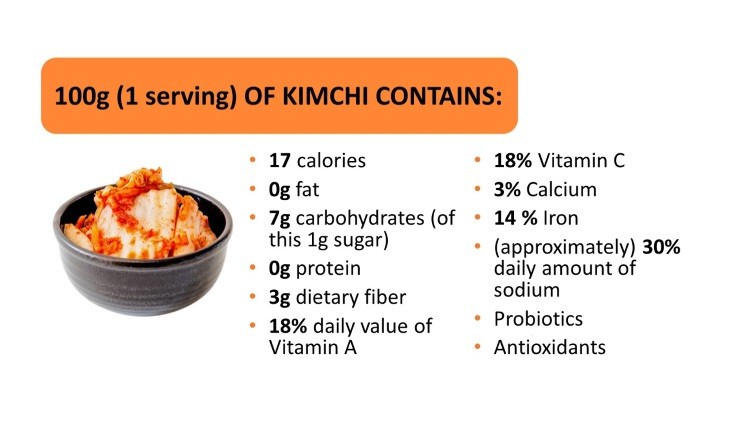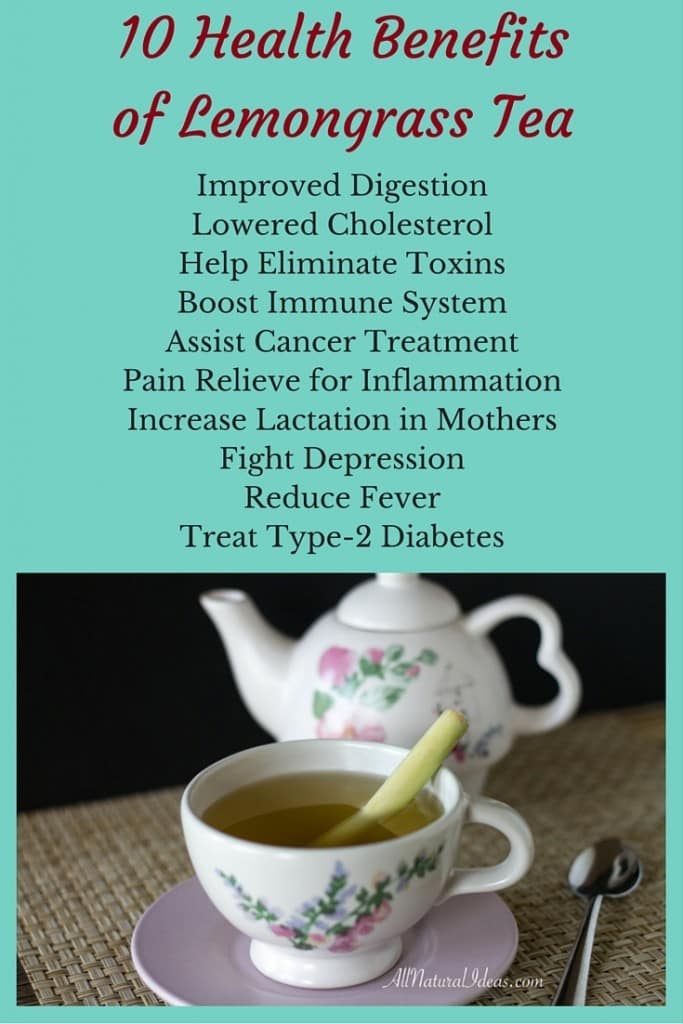The Ultimate Kimchi Health Guide: Benefits, Nutrition, and Risks
In the vibrant tapestry of global cuisines, few dishes command as much reverence and intrigue as kimchi. More than just a fermented vegetable side dish, kimchi is a culinary cornerstone of Korean culture, a symbol of resilience, community, and an ancient wisdom that is now being vigorously validated by modern science. For centuries, it has graced Korean tables, its pungent aroma and fiery kick awakening palates and fortifying bodies. But beyond its undeniable gastronomic appeal, kimchi has quietly ascended to the status of a global superfood, heralded for a constellation of health benefits that range from bolstering immunity to shaping the very landscape of our inner ecology.
This guide embarks on a journey into the heart of kimchi, unraveling its fascinating story from humble preservation method to a complex probiotic powerhouse. We will delve into its intricate nutritional profile, explore the profound health benefits it offers, and critically examine the potential risks and considerations for its mindful consumption. For the discerning palate and the inquisitive mind, this is not merely an article; it is an invitation to understand, appreciate, and perhaps even embrace the ultimate kimchi experience.
I. Kimchi: A Legacy Etched in Salt and Spice
The story of kimchi is as old as the need for survival. In Korea’s harsh winters, fresh vegetables were scarce, necessitating ingenious methods of preservation. Early forms of kimchi, dating back to the Silla Dynasty (57 BCE – 935 CE), were primarily salted vegetables, a testament to the ingenuity born of necessity. The true transformation, however, began with the introduction of chili peppers from the Americas in the 16th century. This vibrant, fiery spice, gochugaru, irrevocably altered kimchi’s destiny, imparting its signature crimson hue and complex heat, and ironically, enhancing its preservative qualities and nutritional density.
What began as a practical solution evolved into a culinary art form, deeply interwoven with Korean identity. Kimjang, the communal tradition of making large batches of kimchi for the winter, is recognized by UNESCO as an Intangible Cultural Heritage of Humanity, underscoring its profound social and cultural significance. It is a ritual that fosters community, shares generational knowledge, and ensures the sustenance and health of families through the cold months.
At its core, kimchi is a fermented concoction, most commonly featuring Napa cabbage (baechu) as its star ingredient. But its complexity arises from a harmonious blend of garlic, ginger, radishes, scallions, chili powder (gochugaru), and often a seafood paste (jeotgal) like salted shrimp or anchovy, which contributes umami and accelerates fermentation. This medley of ingredients, once combined and left to ferment, undergoes a magical transformation, guided by an invisible army of lactic acid bacteria. It is this fermentation that not only develops kimchi’s iconic tangy, spicy, and umami-rich flavor profile but also unlocks its extraordinary health potential.
II. The Pantheon of Kimchi’s Health Benefits: A Scientific Symphony
The health benefits of kimchi are not merely anecdotal; they are increasingly supported by a growing body of scientific research, painting a picture of a food that actively nurtures the body from the inside out.
A. The Gut Microbiome’s Best Friend: Probiotic Power
Perhaps the most celebrated benefit of kimchi lies in its rich probiotic content. The fermentation process, primarily driven by Lactobacillus species, converts sugars into lactic acid, creating an acidic environment that preserves the vegetables and fosters the growth of beneficial bacteria.
- Balancing the Inner Ecosystem: These live microorganisms, when consumed, colonize the gut, contributing to a diverse and balanced microbiome. A healthy gut microbiome is fundamental to overall health, influencing everything from digestion and nutrient absorption to immune function and even mood.
- Short-Chain Fatty Acids (SCFAs): Probiotic fermentation in the gut produces SCFAs like butyrate, acetate, and propionate. Butyrate, in particular, is a primary energy source for colon cells and plays a critical role in maintaining gut barrier integrity, reducing inflammation, and potentially protecting against colorectal cancer.
- Improved Digestion and Nutrient Absorption: A balanced gut flora aids in the breakdown of food, reduces symptoms of indigestion, bloating, and gas, and enhances the bioavailability of certain vitamins and minerals.
B. Immune System Fortification: Your Body’s Inner Shield
The intricate connection between the gut and the immune system is well-established, and kimchi’s probiotic content plays a starring role in this relationship.
- Gut-Immune Axis: A healthy gut microbiome trains the immune system, helping it differentiate between harmful pathogens and beneficial substances. Studies suggest that kimchi consumption can modulate immune responses, potentially enhancing the body’s defense mechanisms against infections.
- Vitamin C and Antioxidants: Beyond probiotics, kimchi is a good source of Vitamin C, a powerful antioxidant known for its immune-boosting properties. The various spices and vegetables also contribute a spectrum of antioxidants, which protect immune cells from oxidative damage.
C. A Shield Against Chronic Disease: More Than Just a Side Dish
Kimchi’s complex matrix of ingredients contributes to its potential role in mitigating the risk factors for several chronic diseases.
- Antioxidant Powerhouse: The vibrant gochugaru (Korean chili powder) is rich in capsaicinoids, known for their antioxidant and anti-inflammatory properties. Garlic, a universal ingredient in kimchi, contains allicin, a potent compound with antioxidant, antimicrobial, and cardiovascular benefits. Ginger, another common component, adds gingerols, powerful anti-inflammatory and antioxidant agents. Together, these compounds combat free radicals, reducing oxidative stress throughout the body.
- Anti-inflammatory Effects: Chronic inflammation is a root cause of many modern diseases. Kimchi’s blend of antioxidants and specific compounds from its ingredients (like gingerols and capsaicin) has demonstrated anti-inflammatory effects, potentially offering protection against conditions such as arthritis and inflammatory bowel disease.
- Cardiovascular Health: Research suggests that regular consumption of fermented foods like kimchi may contribute to better cardiovascular health.
- Cholesterol Reduction: Some studies indicate that kimchi can help lower total cholesterol and LDL ("bad") cholesterol levels, possibly due to the beneficial bacteria and fiber content.
- Blood Pressure Regulation: While kimchi is high in sodium (a concern we will address), certain compounds and the fermentation process itself may have a positive effect on blood pressure in some individuals, particularly by improving arterial stiffness. The potassium content in the vegetables can also help counterbalance sodium.
- Weight Management: For those on a weight management journey, kimchi can be a valuable ally.
- Low Calorie, High Fiber: It’s a relatively low-calorie food packed with fiber, which promotes satiety, helping you feel fuller for longer and reducing overall calorie intake.
- Metabolic Boost: Capsaicin in chili peppers is known to slightly boost metabolism and increase fat burning, contributing to weight loss efforts.
- Gut-Weight Connection: A balanced gut microbiome, fostered by probiotics, is increasingly linked to healthier weight management and metabolism.
- Diabetes Management: The fiber in kimchi can help regulate blood sugar levels by slowing down glucose absorption. Furthermore, some studies suggest that fermented foods may improve insulin sensitivity, a crucial factor in managing type 2 diabetes.
- Potential Anti-Cancer Properties: While research is ongoing and largely in preclinical stages, the cruciferous vegetables (like Napa cabbage) in kimchi contain glucosinolates, which convert into isothiocyanates during digestion. These compounds, along with allicin from garlic and capsaicin from chili peppers, have shown promising anti-cancer properties in laboratory settings, including inhibiting tumor growth and inducing apoptosis (programmed cell death) in cancer cells.
D. Nutritional Powerhouse: A Micro-Nutrient Marvel
Beyond its active compounds, kimchi delivers a significant punch of essential vitamins and minerals. The fermentation process can even enhance the bioavailability of some of these nutrients.
- Vitamins:
- Vitamin C: An essential antioxidant for immune health, skin integrity, and iron absorption.
- Vitamin K: Crucial for blood clotting and bone health.
- B Vitamins (especially B1, B2, B3, B6, and B12): Important for energy metabolism, nerve function, and red blood cell formation. The presence of B12 in fermented vegetables is particularly noteworthy, offering a plant-based source for vegans (though levels can vary).
- Minerals:
- Iron: Essential for oxygen transport and energy production.
- Calcium: Vital for bone health and muscle function.
- Potassium: Important for blood pressure regulation, fluid balance, and nerve signals.
- Selenium: A trace mineral with antioxidant properties, supporting thyroid function.
- Fiber: Abundant in the cabbage and other vegetables, fiber is crucial for digestive health, blood sugar regulation, and satiety.
III. Navigating the Nuances: Nutritional Profile and Potential Risks
While kimchi is undeniably a health marvel, a knowledgeable audience understands that no food is a panacea, and a balanced perspective requires acknowledging its full nutritional profile and potential downsides.
A. The Nutritional Breakdown (per 100g, approximate and variable)
The exact nutritional content of kimchi can vary significantly depending on the ingredients, fermentation time, and specific recipe. However, a general overview reveals its low-calorie, nutrient-dense nature:
- Calories: ~15-25 kcal
- Carbohydrates: ~3-4g (mostly fiber, some fermented sugars)
- Fiber: ~2g
- Protein: ~1-2g
- Fat: <0.5g
- Sodium: ~400-800mg (This is the most significant variable and potential concern)
- Vitamin C: Significant amounts
- Vitamin K: Significant amounts
- B Vitamins: Present, especially B1, B2, B3, B6, B12 (variable)
- Iron, Calcium, Potassium, Selenium: Present in smaller but meaningful amounts
B. The Sodium Conundrum: A Salty Truth
The most prominent nutritional concern with kimchi is its sodium content. Salt is a crucial ingredient in kimchi making, serving multiple purposes:
- Preservation: It draws out moisture, inhibiting the growth of undesirable bacteria.
- Flavor: It enhances the taste and balances other strong flavors.
- Texture: It helps crisp the cabbage.
- Impact on Blood Pressure: For individuals sensitive to sodium, high intake can contribute to elevated blood pressure, increasing the risk of cardiovascular disease. This is a critical point of consideration, especially for those with hypertension or a family history of it.
- Mitigation Strategies:
- Moderation: Enjoying kimchi in smaller portions is key.
- Rinsing: Briefly rinsing store-bought kimchi before consumption can reduce its sodium content, though it may also slightly alter flavor and reduce some soluble nutrients.
- Homemade Control: Making your own kimchi allows you to control the amount of salt used. You can experiment with lower sodium recipes, though be mindful that significantly reducing salt might affect the fermentation process and shelf life.
- Balance with Potassium: Pairing kimchi with potassium-rich foods can help balance sodium levels in the body.
C. Histamine Intolerance: A Less Common Reaction
As a fermented food, kimchi is naturally rich in histamines, which are biogenic amines produced by microorganisms during fermentation. While most people can process histamines without issue, some individuals suffer from histamine intolerance, a condition where the body lacks sufficient enzymes (like diamine oxidase, DAO) to break down ingested histamine effectively.
- Symptoms: For those with histamine intolerance, consuming histamine-rich foods can trigger a range of symptoms, including headaches, migraines, skin rashes, itching, hives, digestive upset (diarrhea, nausea), nasal congestion, and even palpitations.
- Individual Variability: The severity of histamine intolerance varies greatly, and not all fermented foods affect individuals equally. If you suspect histamine intolerance, it’s advisable to monitor your symptoms and consult with a healthcare professional or registered dietitian.
D. Allergic Reactions: Rare but Possible
While uncommon, allergic reactions to specific ingredients in kimchi can occur. The most common allergens would be:
- Shellfish: Many traditional kimchi recipes use jeotgal (salted shrimp or anchovy paste). Individuals with shellfish allergies must be vigilant and opt for vegetarian or vegan kimchi.
- Garlic and Ginger: Though less common, allergies to alliums (like garlic and onion) or ginger are possible.
- Chili Peppers: While not a true allergy, some individuals may have a sensitivity to capsaicin, leading to digestive discomfort or oral irritation.
Always check the ingredient list, especially for commercially prepared kimchi, and inform your hosts if consuming homemade versions.
E. Food Safety and Contamination: The Art of Proper Fermentation
The beauty of fermentation lies in its ability to create a safe, acidic environment that inhibits the growth of most pathogenic bacteria. However, improper preparation or storage can pose risks.
- Cross-Contamination: Using unclean utensils or containers during preparation can introduce harmful bacteria.
- Insufficient Fermentation: If the kimchi is not allowed to ferment adequately, the pH may not drop low enough to ensure safety, potentially allowing spoilage organisms or pathogens to thrive.
- Improper Storage: Once fermented, kimchi should be stored in the refrigerator to slow down further fermentation and prevent spoilage. Leaving it at room temperature for extended periods after fermentation can lead to over-fermentation, an off-flavor, or in rare cases, spoilage.
- Signs of Spoilage: While mold can sometimes form on the surface (which can often be skimmed off if only superficial), signs like a rotten smell, slimy texture, or unusually discolored patches that penetrate deeply indicate spoilage, and the kimchi should be discarded.
IV. Embracing Kimchi: Practical Integration and Mindful Consumption
Understanding kimchi’s complex profile empowers us to integrate it mindfully into our diets, harnessing its benefits while navigating its considerations.
A. Choosing Your Kimchi
- Store-Bought: When purchasing commercially, look for kimchi in the refrigerated section, often labeled "live and active cultures." Check the ingredient list for any allergens or excessive additives. Different brands will have varying levels of spice and salt.
- Homemade: Making your own kimchi is a rewarding experience that allows complete control over ingredients, salt levels, and fermentation time. Numerous recipes are available, ranging from traditional to vegan variations.
- Types of Kimchi: While baechu-kimchi (Napa cabbage kimchi) is the most famous, explore other varieties like kkakdugi (diced radish kimchi), chonggak-kimchi (ponytail radish kimchi), or oisobagi (cucumber kimchi) for different textures and flavor profiles.
B. Culinary Versatility: Beyond the Banchan
Kimchi’s utility extends far beyond a simple side dish. Its unique flavor profile can elevate a multitude of dishes:
- Traditional: Enjoy it as a banchan (side dish) with any Korean meal, or incorporate it into classics like kimchi jjigae (kimchi stew), kimchi bokkeumbap (kimchi fried rice), or kimchi jeon (kimchi pancake).
- Modern Fusion: Experiment with kimchi in unexpected ways:
- Tacos or Burritos: Add a spicy, tangy kick to your Mexican-inspired dishes.
- Sandwiches or Burgers: A layer of kimchi can cut through richness and add zest.
- Pasta: Incorporate it into a creamy sauce or a stir-fried noodle dish.
- Eggs: Mix into scrambled eggs, omelets, or serve alongside a fried egg.
- Soups and Ramen: A spoonful can instantly deepen the flavor of broths.
C. Moderation and Personalization: Listen to Your Body
The "ultimate" guide emphasizes individual experience.
- Start Small: If you’re new to fermented foods, begin with small portions to allow your digestive system to adjust to the influx of new bacteria.
- Observe Your Body: Pay attention to how your body responds. If you experience digestive discomfort, headaches, or other adverse reactions, consider reducing your intake or exploring lower-histamine options.
- Dietary Needs: Always consider your personal dietary restrictions, allergies, and health conditions (e.g., hypertension for sodium intake, histamine intolerance).
- Variety is Key: While kimchi is fantastic, a truly healthy diet incorporates a wide range of fermented foods and diverse plant-based options to ensure a broad spectrum of nutrients and beneficial microbes.
V. Conclusion: A Timeless Elixir for Modern Wellness
The journey through kimchi’s health guide reveals a food that is far more than its pungent aroma and spicy kick. It is a testament to the enduring power of traditional wisdom, now illuminated and validated by the lens of modern science. From its humble origins as a vital preservation method, kimchi has evolved into a global culinary icon, celebrated not just for its complex, umami-rich flavors, but for its profound capacity to nourish and heal.
As a potent probiotic powerhouse, a rich source of antioxidants, and a trove of essential vitamins and minerals, kimchi offers a compelling array of benefits for gut health, immune function, and protection against chronic diseases. Yet, an informed appreciation also acknowledges its significant sodium content and the potential for individual sensitivities like histamine intolerance or allergies.
In embracing kimchi, we are invited to partake in a cultural legacy, to experience a symphony of flavors, and to invest in our well-being. By choosing wisely, consuming mindfully, and integrating it creatively into our diets, we can unlock the full potential of this crimson elixir. Kimchi is not merely food; it is a story of survival, a celebration of community, and a vibrant, living testament to the intricate dance between nature, tradition, and the pursuit of ultimate health.






